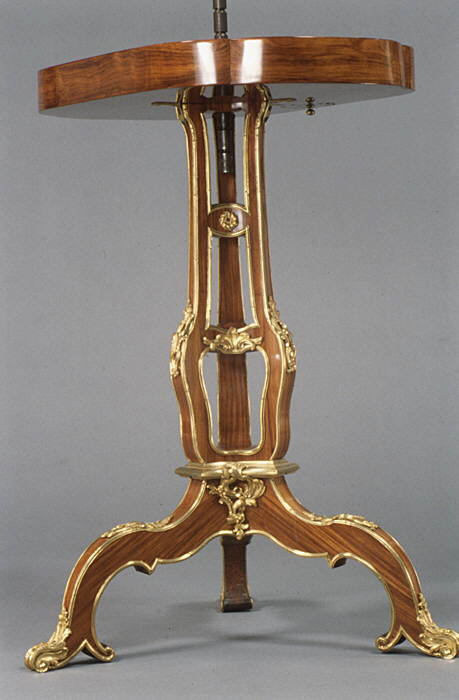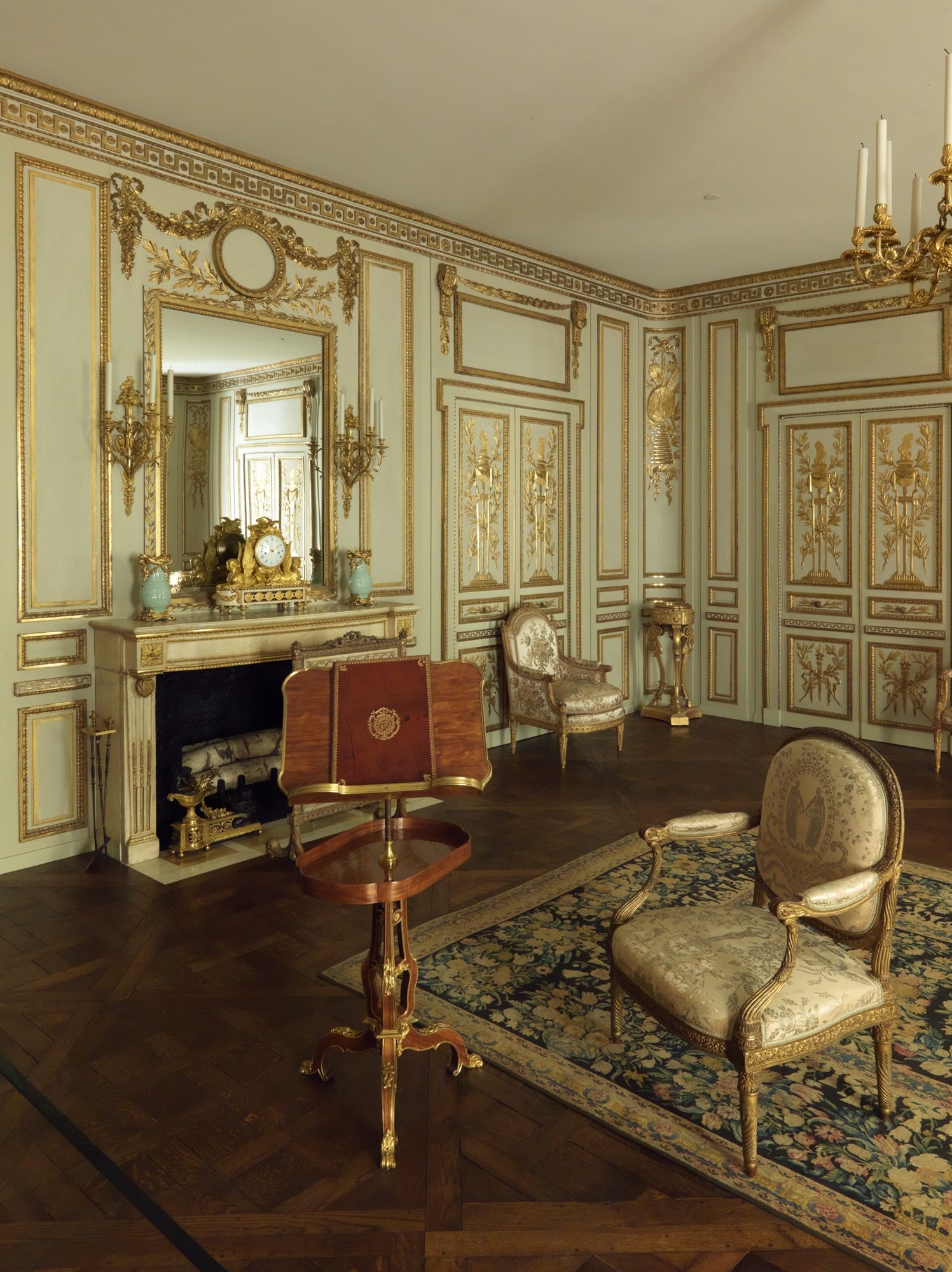Adjustable reading and writing table (pupitre à crémaillère, servant de table)
Attributed to Martin Carlin French
The tulipwood-veneered reading-and-writing lectern of this accommodating piece of furniture can be tilted forward and backward by pressing a button in the brass housing of the lectern, the sleeve of which fits over the top of the notched steel rod. A brass ratchet mounted to the underside of the tray engages the notches of the rod and allows the height of the lectern to be adjused for use from either a seated or standing position. With the lectern fully extended, the piece becomes quite top-heavy, and the spreading, double-pronged feet of its beautifully ornamented tripod base are intended to prevent it from tipping.
Several variants of this stand exist; the closest of these belonged in the eighteenth century to a noted collector of decorative arts of his time, Louis-Marie-Augustin, duc d'Aumont (1709–1782). At the sale of his effects in 1782, a stand was catalogued under lot number 367. The description of the lot, beginning with the words "Un Pupître à cremaillere, servant de table...," has enabled the duke's stand, which is very similar to the Museum's newly acquired example, to be identified in a French private collection.
Though without a signature, this piece has been attributed to the ébéniste Martin Carlin, who was permitted to sign workshop products only after his election as master cabinetmaker in 1766. The distribution of gilt-bronze ornament over the base is reminiscent of the dispositions of mounts that appear on later tripod stands, signed by him, in the Louis XVI style. Carlin may have produced the Museum's reading stand in the early 1760s while working under the influence of his brilliantly inventive brother-in-law, Jean-François Oeben, a practicing cabinetmaker from 1754 until his death in 1763.
Due to rights restrictions, this image cannot be enlarged, viewed at full screen, or downloaded.
This artwork is meant to be viewed from right to left. Scroll left to view more.





